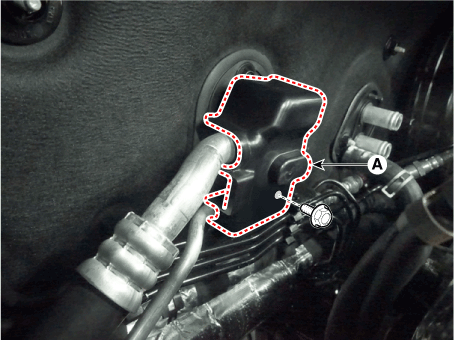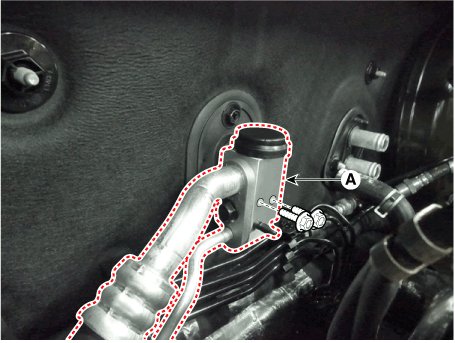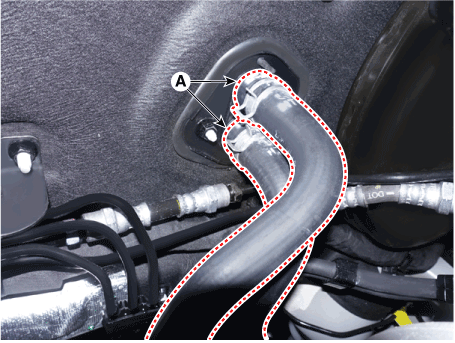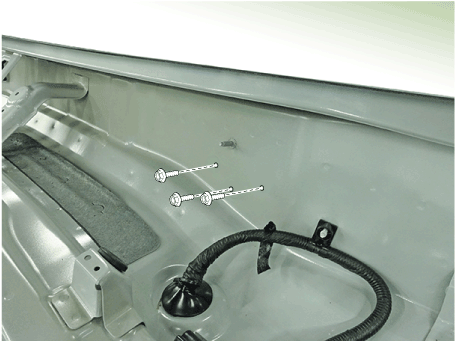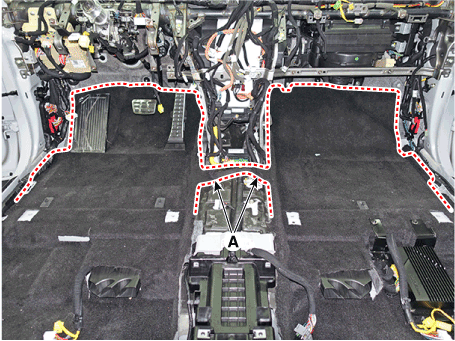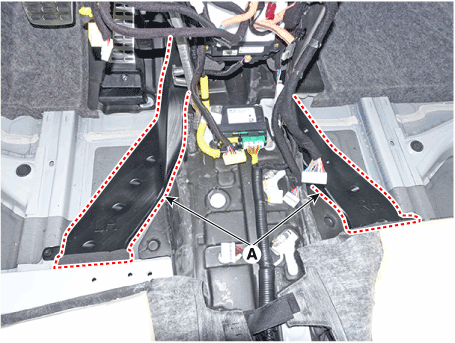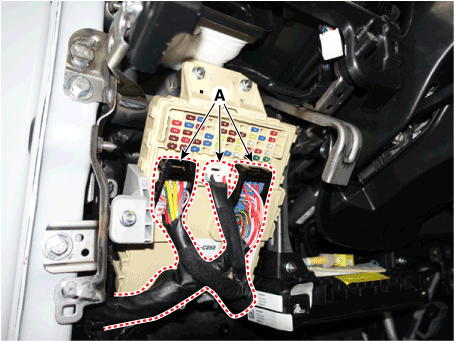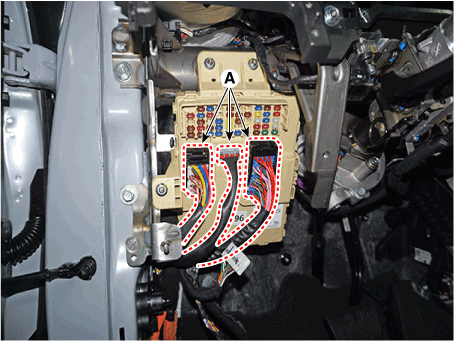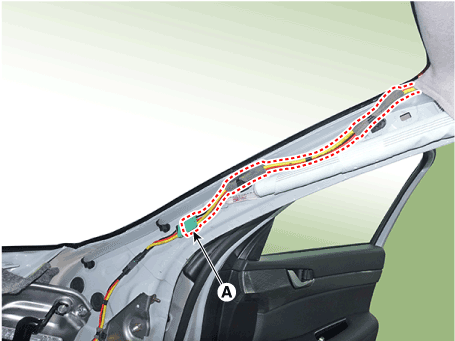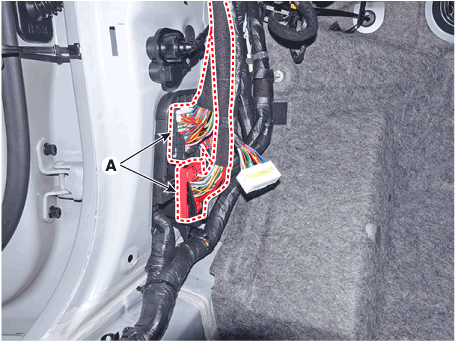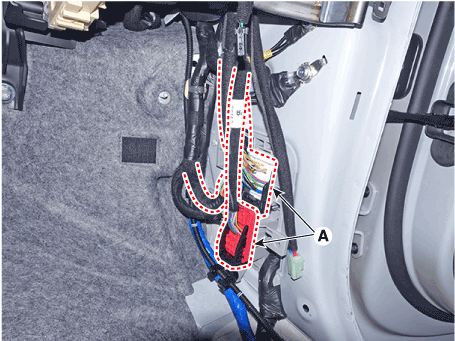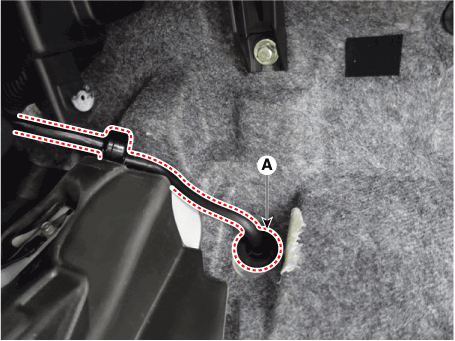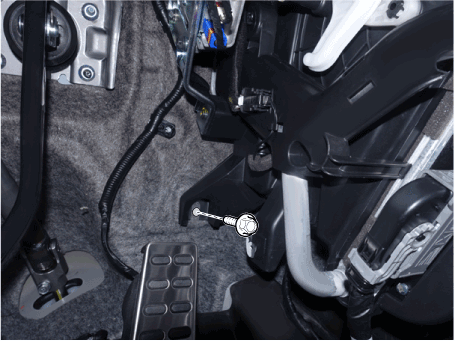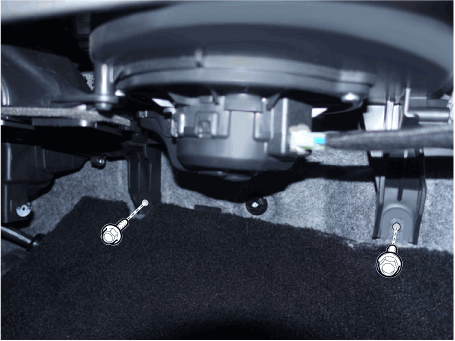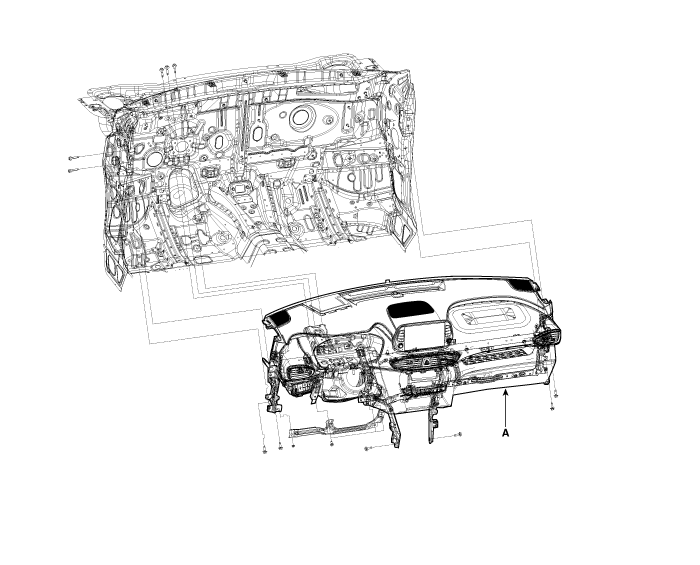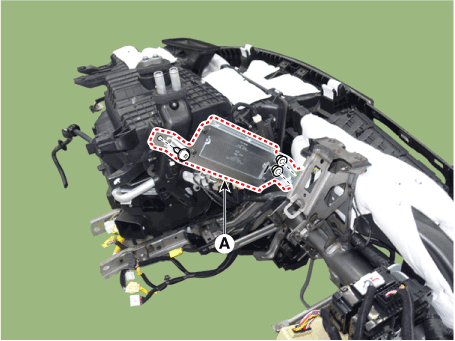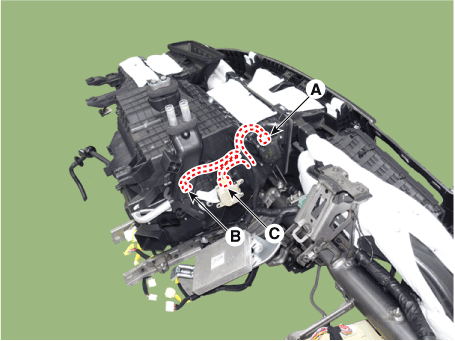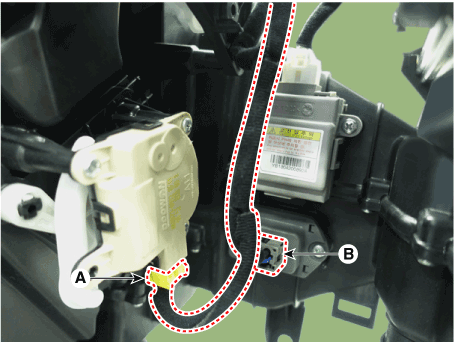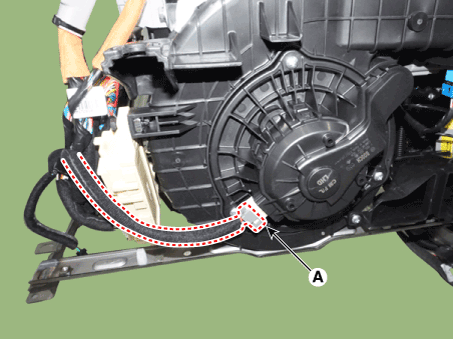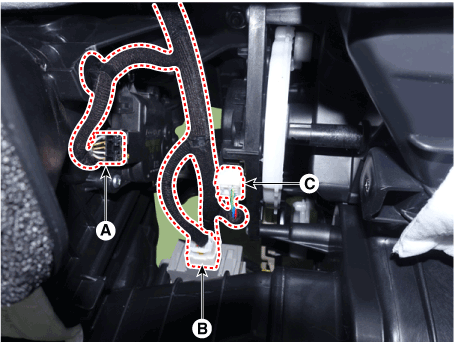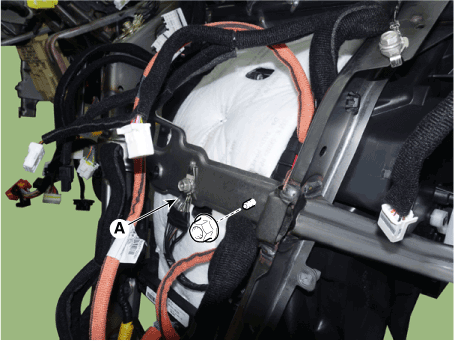Hyundai Palisade: Heater / Heater Unit
Components and components location
| Component Location |
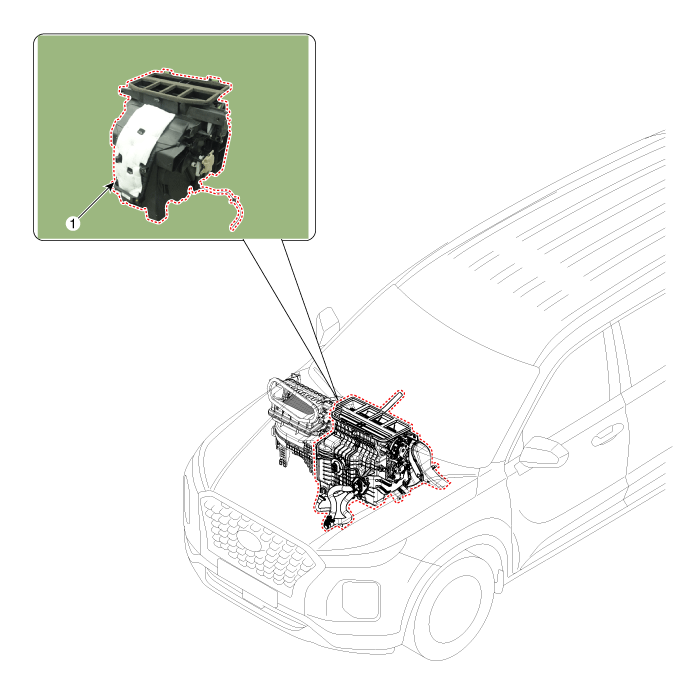
| 1. Heater unit assembly |
| Components |
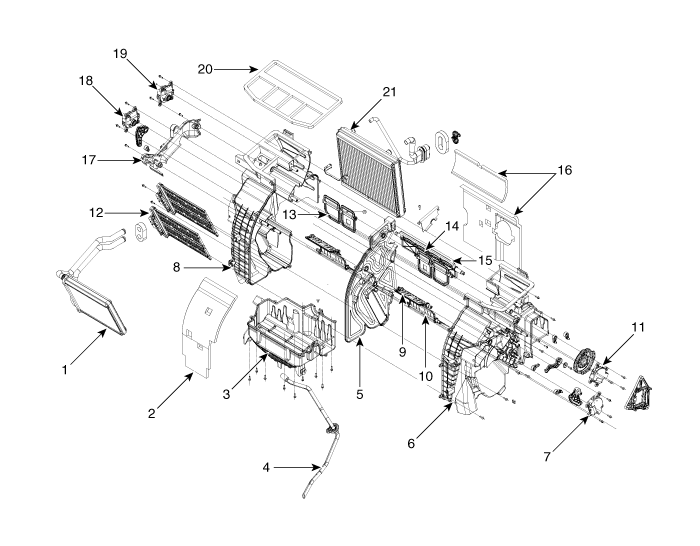
|
1. Heater core assembly 2. Heater unit pad 3. Heater lower cover 4. Drain hose 5. Heater blind case 6. Heater case [RH] 7. Temperature actuator [RH] |
8. Heater case [LH] 9. FOOT Door assembly 10. Temperature door assembly 11. Mode actuator 12. PTC Heater 13. Vent door assembly [LH] 14. Vent door assembly [RH] |
15. DEF Door assembly 16. Heater unit pad 17. Heater pipe cover 18. Temperature actuator [LH] 19. Duct seal assembly 21. Evaporator assembly |
Repair procedures
| Replacement |
| 1. |
Disconnect the negative (-) battery terminal.
|
| 2. |
Recover the refrigerant with a recovery/recycling/charging station.
|
| 3. |
When the engine is cool, drain the engine coolant from the radiator.
(Refer to Engine Mechanical System - "Coolant")
|
| 4. |
Remove the cowl top cover.
(Refer to Body - "Cowl Top Cover")
|
| 5. |
Loosen the mounting nut and remove the expension valve cover (A).
|
| 6. |
Loosen the mounting bolts and separate the expension valve (A) from
the evaporator core.
|
| 7. |
Separate the heater hose (A).
|
| 8. |
Loosen the cowl cross bar assembly mounting bolts.
|
| 9. |
Remove the front seat assembly.
(Refer to Body - "Front Seat Assembly")
|
| 10. |
Remove the floor console assembly.
(Refer to Body - "Floor Console Assembly")
|
| 11. |
Remove the front pillar trim.
(Refer to Body - "Front Pillar Trim")
|
| 12. |
Remove the cowl side trim.
(Refer to Body - "Cowl Side Trim")
|
| 13. |
Remove the crash pad lower panel.
(Refer to Body - "Crash Pad Lower Panel")
|
| 14. |
Remove the crash pad center panel.
(Refer to Body - "Crash Pad Cener Panel")
|
| 15. |
Remove the steering column shroud lower panel.
(Refer to Body - "Steering Column Shroud Panel")
|
| 16. |
Remove the steering wheel.
(Refer to Steering System - "Steering Wheel")
|
| 17. |
Remove the multifunction switch.
(Refer to Body Electrical System - "Multifunction Switch")
|
| 18. |
Lower the steering column after loosening the mounting bolts.
(Refer to Steering System - "Steering Column and Shaft")
|
| 19. |
Remove the front door scuff trim.
(Refer to Body - "Door Scuff Trim")
|
| 20. |
Remove the shift lever assembly.
(Refer to Automatic Transaxle System - "Shift Lever")
|
| 21. |
Remove the accelerator pedal.
(Refer to Engine Control/Fuel System - "Accelerator Pedal")
|
| 22. |
Separate the floor carpet (A) to obtain space for removing the rear
heating duct.
|
| 23. |
Loosen the mounting nuts and remove the rear heating duct (A).
|
| 24. |
Disconnect the junction box connectors (A).
|
| 25. |
Disconnect the multi box connectors (A).
[LH]
[RH]
|
| 26. |
Disconnect the multi box connectors (A).
[LH]
[RH]
|
| 27. |
Remove the drain hose (A).
|
| 28. |
Remove the lower mounting bolt of the blower unit.
[LH]
[RH]
|
| 29. |
After loosening the bolts and nuts remove the crash pad and heater &
blower unit assembly (A) together.
|
| 30. |
Disconnect the heater & blower unit connectors.
|
| 31. |
Loosen the heater & blower unit mounting bolt (A).
|
| 32. |
Loosen the mounting nuts and remove the heater & blower unit (A) from
the crash pad.
|
| 33. |
Loosen the mounting screw and separate the heater unit (A) from the
blower unit (B).
|
| 34. |
Install in the reverse order of removal.
|
 Heater
Heater
..
 Heater Core
Heater Core
Repair procedures
Replacement
1.
Disconnect the negative (-) battery terminal.
2.
Remove the heater and blower assembly...
Other information:
Hyundai Palisade (LX2) 2020-2025 Owner's Manual: Engine coolant
The high-pressure cooling system has a reservoir filled with year-round antifreeze coolant. The reservoir is filled at the factory. Check the antifreeze protection and coolant level at least once a year, at the beginning of the winter season and before traveling to a colder climate...
Hyundai Palisade (LX2) 2020-2025 Service Manual: Cruise Control (CC) Switch
Components and components location Components 1. Remote control switch (Audio swtich) 2. Remote control switch (Cruise control switch) Schematic diagrams Circuit Diagram Repair procedures Removal 1...
Categories
- Manuals Home
- 1st Generation Palisade Owners Manual
- 1st Generation Palisade Service Manual
- Side view mirror adjustment, Folding the side view mirrors
- Theft-alarm system
- Electronic Child Safety Lock System
- New on site
- Most important about car
How Does the Air Bag System Operate?
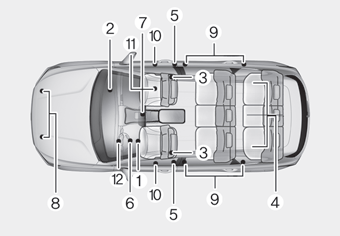
The SRS consists of the following components:
1. Driver's front air bag module
2. Passenger's front air bag module
3. Side air bag modules
4. Curtain air bag modules
5. Retractor pre-tensioner
6. Air bag warning light
7. SRS control module (SRSCM)/
Rollover sensor
8. Front impact sensors
9. Side impact sensors
10.Side pressure sensors
11. Occupant classification system
12. Driver’s knee airbag module
Copyright © 2025 www.hpalisadelx.com

